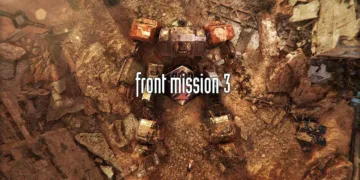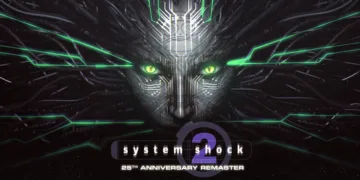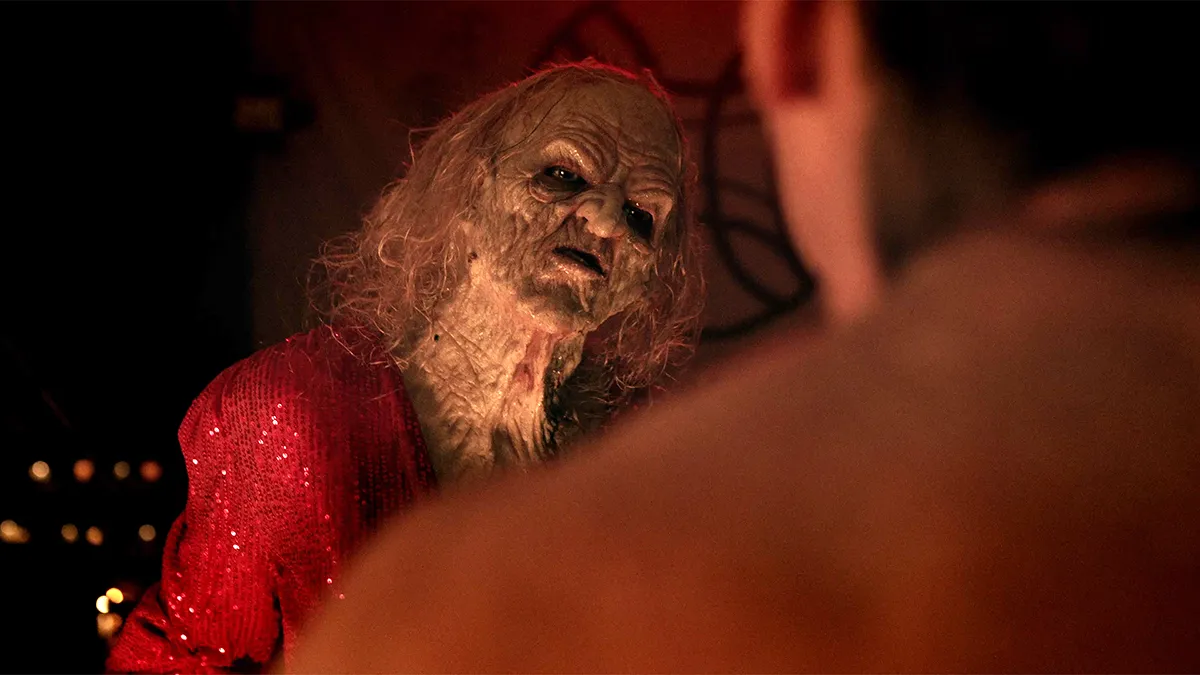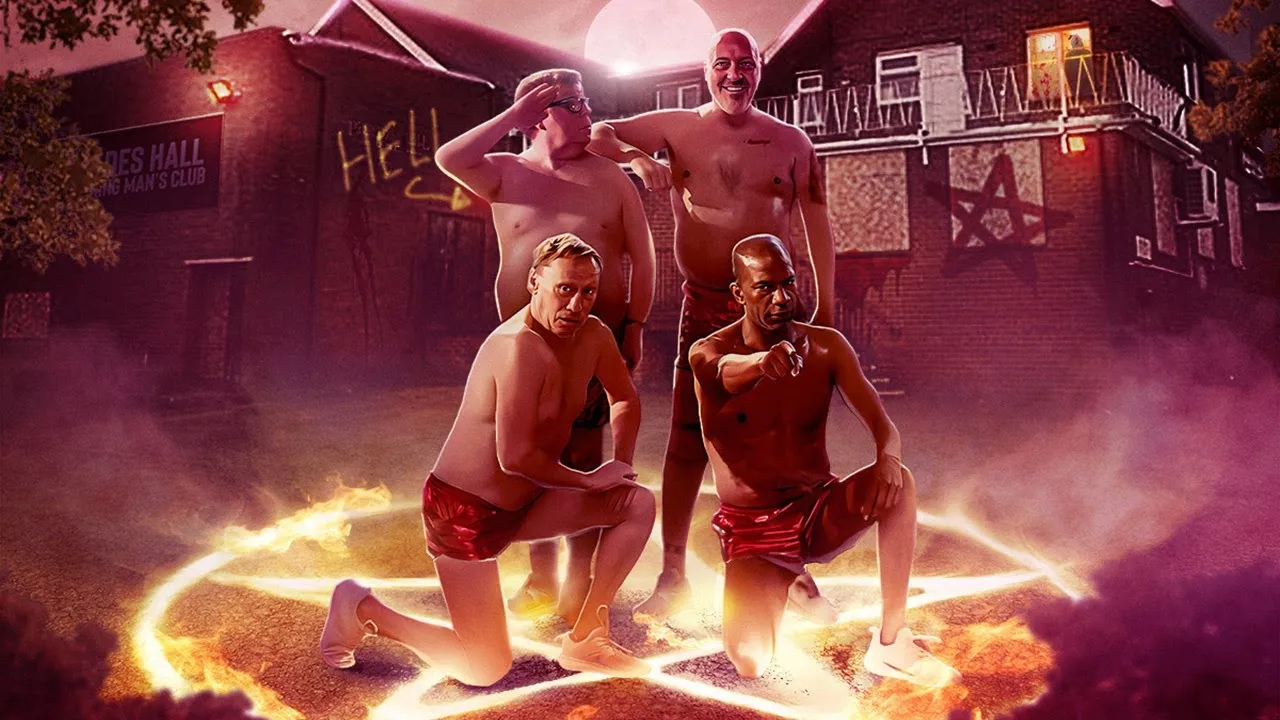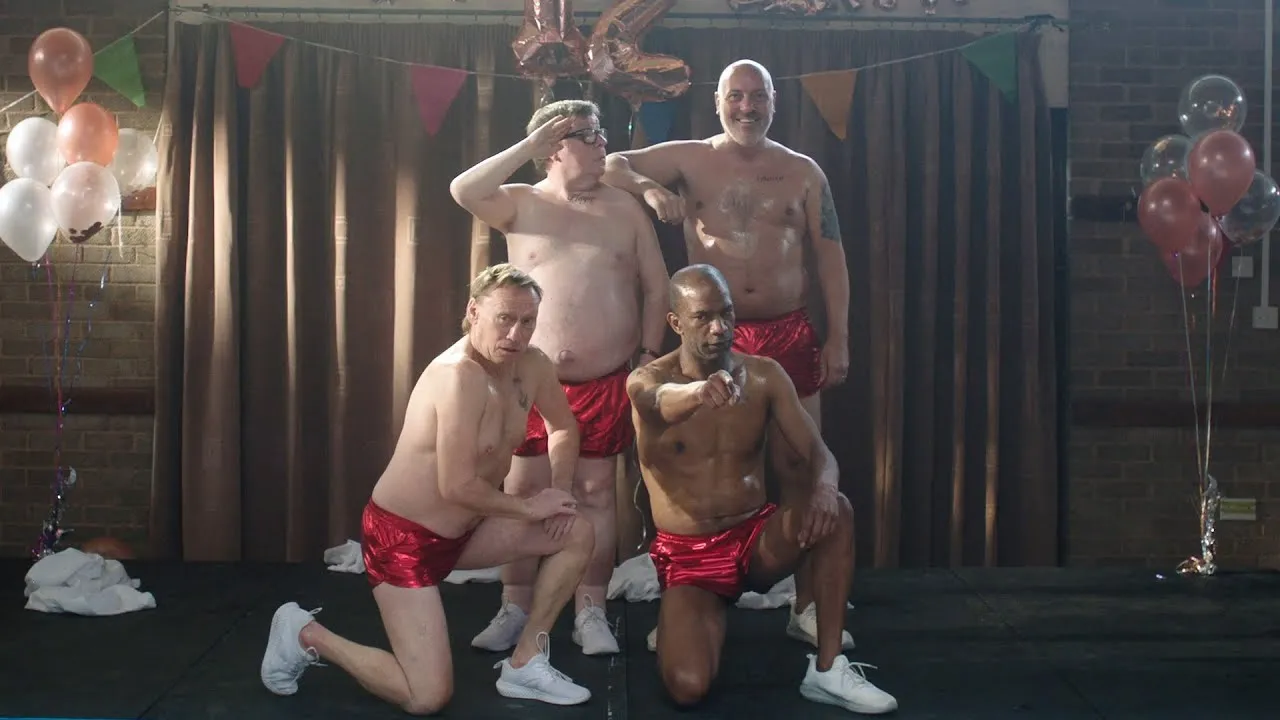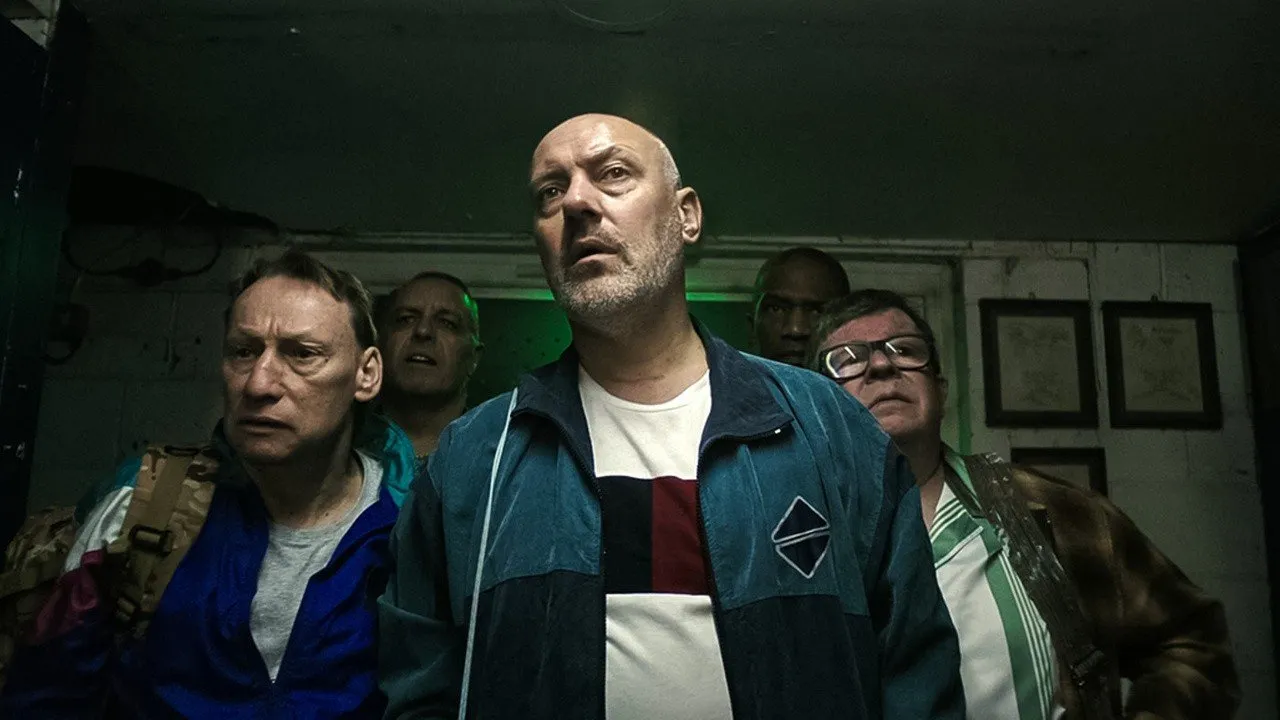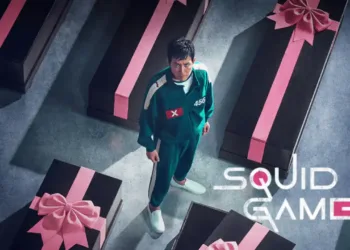At first glance, Members Club seems like a loud comedy-horror where middle-aged male strippers accidentally become involved in a witch’s plot to come back to life. It combines absurdity with the grotesque. The narrative follows Alan, the helpless leader of the sketch comedy group Wet Dreams, as he navigates the stresses of a dying career and the complexities of distant family ties.
Penises must be severed to satisfy a centuries-old witch’s dark ambitions, showing a unique blend of body horror and comic relief that challenges genre conventions. As the plot develops, the stakes dramatically increase, fusing lewd humor with the macabre.
The film is immersed in the rich tapestry of British cinema and is full of cultural references that resonate with a very local flavor. From its working-class humor to the strange cameos of old pop stars like Peter Andre, the movie has a unique style that pokes fun at and honors its roots.
As a result, Members Club establishes itself as a new take on the horror-comedy genre, evoking British classics while establishing its niche in the pantheon of darkly funny stories. This piece is unique because it combines the everyday struggles of older performers with the fantastical elements of folk horror, allowing viewers to revel in the chaos that happens when normal lives and the supernatural come together.
Unraveling the Layers: Characters in Members Club
Dean Kilbey portrayed Alan, the protagonist of Members Club, with a blend of vulnerability and comedic flair. Alan’s journey shows a man dealing with the remains of his past. He is a middle-aged dreamer who holds on to the glory days of his strip group, Wet Dreams.
As he attempts to get back in touch with his estranged daughter, Daisy, his character acts as an emotional anchor, navigating the rough waters of parental regret and the threat of failure. This family theme adds a touching layer to the movie, showing a depth that stands in stark contrast to the absurdity that is all around him. The film’s exploration of masculinity and vulnerability in a society that frequently ignores both is highlighted by Alan’s transformation from a helpless leader to a figure caught up in the machinations of the supernatural.
The supporting group makes this tapestry even better. Deano, played by Liam Noble, is the tired realism of a manager ready to give up. The other members of Wet Dream are all stereotypes of middle-aged men, and their different personalities make the show more fun. Ratboy, Neil, and Carly are like a small social group; their jokes show how weak the ties that keep them together as they face impending doom. Even as they deal with their absurd situations, the interplay between these characters highlights the film’s themes of friendship and strength.
Christine, portrayed by Emma Stannard, becomes the movie’s antagonist and is a complex character with many layers. Her motivations, which are based on betrayal and a desire for revenge, reflect a larger commentary on gender roles and how society views femininity. Christine’s change into a scary witch shows how unsettling it is when power and desperation come together.
Her character is very different from the guys around her, who are just bumbling around. Daisy, played by Barbara Smith, adds more emotional weight by showing how family love and the need to be alone can clash. Her relationship with Alan is tense, illuminating the fight for connection amid chaos and highlighting the movie’s exploration of how the past inexorably shapes the future.
The Twists of Fate: Navigating the Plot of Members Club
Members Club starts its crazy journey when the Wet Dreams troupe shows up. They are a group of middle-aged strippers who are dealing with the harsh facts of losing their jobs and becoming less popular. As Alan and his ragtag crew desperately hold on to their dreams against financial instability, the movie sets the stage for a loud exploration of crisis masculinity.
The event that starts it all—what initially seems like a great chance to make a lot of money—quickly turns into a nightmare that leads the characters into a maze of supernatural danger. Unraveling a tapestry of comedy and horror, this shift from everyday struggles to the grotesque is expertly done.
The witch’s resurrection, steeped in absurdity and dread as the narrative progresses, serves as the climax. As the strippers confront a nefarious force that demands both physical and emotional sacrifices, the movie revels in its grotesque humor and shows the consequences of their dangerous job. As the characters must confront their fears while navigating the absurdity of their situation, this crucial scene emphasizes the film’s thematic exploration of vulnerability.
Even though the ending is a mess, it fits with the absurdist journey. After the witch’s rule of terror, the movie reflects on how fragile dreams and strong friendships are, even though it doesn’t hide how silly the movie is. There are times when the pacing is off, which matches the crazy energy of the plot. As the audience travels through this darkly comedic odyssey, they will be entertained and confused.
The Dance of Shadows: Themes and Motifs in Members Club
At its heart, Members Club is a compelling exploration of the interplay of shadows between comedy and horror. It is a dance of shadows that shows more serious truths beneath its raunchy exterior. The movie balances these two elements, mixing absurdity with grotesque horror in moments that make you laugh and feel uncomfortable simultaneously.
As the strippers navigate a world where the supernatural threatens their survival, the humor frequently comes from the characters’ ridiculous situations. In addition to keeping viewers interested, this blend of humor and horror also provides a platform for commentary on the absurdities of life. The movie invites viewers to confront their discomforts through exaggerated situations and gross-out humor, turning fear into laughter.
The movie also serves as a pointed critique of modern society’s aging masculinity. The members of Wet Dreams are all dealing with the inevitable process of getting older, which reflects the worries of a generation trying to stay relevant in a culture obsessed with youth. Their journey shows the vulnerable sides of older men, often hidden by swagger, reflecting a larger social commentary on how older men are excluded. The humor in the movie serves as a coping mechanism, allowing these characters to navigate their insecurities while highlighting their position’s absurdity.
The complicated bond between Alan and his daughter Daisy is just one example of how family dynamics play a crucial role. This exploration of reconciliation adds emotional depth to the narrative, grounding the comedic chaos in genuine human experiences, and ultimately enriching the film’s commentary on the ties that bind us, even in the most absurd of circumstances. Their attempts at reconciliation during chaos highlight the complexities of familial bonds, illuminating the struggles for connection in a world marked by failure and regret.
Crafting Chaos: The Technical Brilliance of Members Club
Marc Coleman, the director of the Members Club, uses a unique method of telling stories that skillfully navigates the dangerous areas between fear and humor. His direction is fun yet chaotic, allowing the movie to swing between hilarious comedy and horrifying moments.
This shifting of tones isn’t just a matter of style; it also reflects the unpredictable nature of the narrative, where absurdity rules and the stakes are constantly changing. Coleman balances these elements well, ensuring the audience stays interested even when the narrative veers into the surreal. He does this by successfully harnessing the tension in the plot. While occasionally shocking, the tonal changes add to the movie’s overall impact and encourage viewers to embrace the wild, unpredictable nature of the genre.
Members Club uses a striking cinematographic style that complements its crazy themes. The lighting choices improve the movie’s mood by casting shadows that heighten the sense of dread while illuminating the absurdity of the characters’ situations. The film’s thematic exploration of dualities—comedy and horror, vulnerability and bravado—is mirrored in this interplay of light and dark.
Special effects play a crucial role in bringingSpecial effects play a crucial role in bringing the movie’s grotesque elements to life. The physical effects, especially the witch and the chaos she causes, make you feel something CGI doesn’t always manage to do. The film’s commentary on the grotesque nature of the characters’ predicament is reinforced by the creative and unsettling creature design, which adds to the overall aesthetic. Members Club stands out for its dedication to practical effects, which successfully ground its supernatural elements in a reality that feels absurd and unsettling in a genre where visual impact is key.
Frightful Fun: Audience Experience and Reception of Members Club
Members Club thrives in a fair environment, where being with other people strengthens the chaos. The absurdity of this movie is perfect for late-night showings when viewers who want a blend of horror and humor can revel in it. A special synergy is created by the audience’s laughter and gasps, allowing viewers to fully engage with the show’s crazy idea.
While the film’s core absurdity has the potential to draw a wider audience willing to embrace the unconventional, its comedic elements resonate particularly well with those familiar with British humor, appealing to demographics that value a blend of kitsch and irreverence.
Because of its blend of ridiculous situations and crude humor, Members Club has an impact long after the movie ends. The longevity of its humor is due to its audacity; grotesque comedy moments are so extreme that they resist easy classification, leaving impressions that elicit laughter and disbelief long after the credits roll. Comparatively, the movie is on par with other cult classics in the horror-comedy genre, like Shaun of the Dead and What We Do in the Shadows. Still, it creates a special niche by concentrating on the difficulties of aging masculinity within a surreal narrative framework.
Members Club is a memorable addition to the genre because it combines sharp social commentary with unrestrained silliness. It allows viewers to laugh at its absurdity while reflecting on the deeper themes beneath its chaotic surface. Members Club is a strong contender for the pantheon of contemporary cult favorites because these kinds of movies frequently win over viewers who enjoy the blend of horror and humor.
Embracing the Absurd: Final Thoughts on Members Club
With its combination of outrageous humor and a sharp critique of social norms, Members Club stands as a lively example of the potential of the horror-comedy genre. Its strengths are its daring blend of absurdity and genuine moments, expertly navigating the complexities of aging masculinity and family dynamics.
In particular, Dean Kilbey’s performance as Alan gives the movie emotional depth, and the rest of the group adds layers of comedic brilliance. Marc Coleman’s direction embraces chaos, ensuring the jarring tonal changes add to the film’s energy.
On the other hand, its desire to push the limits may turn off more mainstream viewers, making its appeal somewhat niche. While effective at eliciting laughter, grotesque humor risks overshadowing the more serious themes at play, possibly leaving some viewers wanting a more unified narrative.
However, the Members Club provides a rich and entertaining experience for those who enjoy a blend of the ridiculous and the macabre. While thinking about the struggles of its characters, it asks viewers to revel in the absurdity of life. This movie promises to resonate with viewers who embrace the unconventional and the outrageous in the pantheon of horror comedies.
The Review
Members Club
Members Club is a brave and crazy addition to the horror-comedy genre. It manages to blend absurd humor with serious social commentary. Some viewers may find the film's shifts in tone confusing, but the lively performances and creative visuals make it an unforgettable experience. Its exploration of aging masculinity and family ties adds depth, ensuring it resonates with those willing to embrace the unconventional. Ultimately, this movie is a wild ride that enjoys the grotesque while encouraging viewers to reflect.
PROS
- Unique blend of horror and comedy
- Strong performances, particularly from the lead
- Engaging social commentary on aging and masculinity
- Creative practical effects and creature design
CONS
- Tonal shifts may be jarring for some viewers
- Humor can be overly grotesque at times
- Plot may feel disjointed or uneven
- Niche appeal may limit mainstream audience reception

































